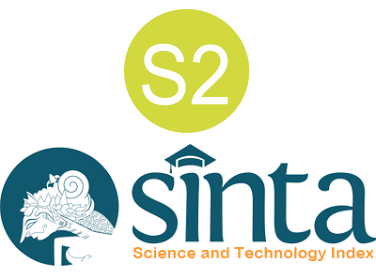Dharmaning Brahmana dalam Geguritan Yadnya Ring Kuruksetra
DOI:
https://doi.org/10.37329/jpah.v9i3.4413Keywords:
Uccawreti Brata, Lascarya, Tri Kaya Parisudha, Hindu Philosophical ValuesAbstract
This research is motivated by the lack of studies on the transfer of the Aswamedha Parwa text into Geguritan Yadnya Ring Kuruksetra (GYRK), especially from the perspective of brahmana ethics, amidst the rampant transformation of Balinese literature that often ignores the moral dimension. The purpose of the research is to analyze the representation of brahmana dharma and the concept of lascarya (sincerity) in GYRK, and to revitalize the philosophical values of Balinese Hinduism through a hermeneutic approach. The method used is textual hermeneutic analysis from the perspective of Hindu literature and philosophy. Primary data are taken from the GYRK and Aswamedha Parwa texts, while secondary data include brahmana ethics literature such as Sarasamuscaya and Agastya Parwa. The results of the study show that Tri Kaya Parisudha (thoughts, speech, deeds) and lascarya are actualized through the actions of four brahmanas who face moral dilemmas, such as food sacrifices in conditions of famine. The transformation of yadnya from a horse sacrifice ritual to a social sacrifice reflects the adaptation of Balinese Hindu ethical values to the challenges of modernization, such as individualism and poverty. Conflicts between characters in the text are resolved through spiritual integrity, such as sewaka dharma (sincere devotion) that goes beyond formal obedience. The conclusion of the study confirms that GYRK not only revitalizes traditional philosophical values, but also becomes a medium for intergenerational ethical dialogue, bridging local wisdom with modern demands through the holistic actualization of dharma. This study contributes to the study of religious literature with a hermeneutic analysis model that integrates text, context, and philosophy, while also offering an adaptive ethical paradigm in responding to global moral degradation.
References
Agastia, I. B. G. (1994). Kesusastraan Hindu Indonesia (Sebuah Pengantar). Denpasar: Yayasan Dharma Sastra.
Agastia, I. B. G. (2006). Dokter Ida Bagus Rai Dan Karya Sastranya. Denpasar: Yayasan Dharma Sastra.
Alit, I N. (2014). Ajaran Karma Phala Sajeroning Lontar Agastya Parwa. Denpasar: Kanwil Kementerian Agama Prov. Bali.
Atmaja, I. B. S. M. (2008). Geguritan Yadnya Ring Kuruksetra: Analisis Struktur dan Nilai (Skripsi). Denpasar: Universitas Udayana.
Cika, I. W., Madia, I. M., & Arnati, N. W. (2021). Narasi Berubah Pesan Moral Tetap: Transformasi Teks Bhagawan Domya ke dalam Cerita Sang Eka Jala Resi. Jurnal Kajian Bali (Journal of Bali Studies), 11(1), 131-146.
Creese, H. (2016). Balinese Literature in Transition: The Politics of Religious and Cultural Identity. Journal of Southeast Asian Studies, 47(3), 456-478.
Creese, H. 2012. Perempuan Dalam Dunia Kakawin: Perkawinan Dan Seksualitas Di Istana Indic Jawa Dan Bali. (Terjemahan IB. Putra Yadnya). Denpasar: Pustaka Larasan.
Damono, S. D. (2023). Alih Wahana. Jakarta: Gramedia Pustaka Utama.
Damono, S. D. (2023). Sosiologi Sastra Pengantar Ringkas. Jakarta: Pusat Pembinaan dan Pengembangan Bahasa Departemen Pendidikan dan Kebudayaan.
Fox, R. (2018). Literature as Moral Pedagogy: The Role of Narrative in Ethical Education. Journal of Moral Education, 47(3), 324-339.
Graham, D. (2014). Kant’s Moral Philosophy: A Critical Exposition. Cambridge University Press.
Jauss, H. R. (1982). Toward an Aesthetic of Reception. University of Minnesota Press.
Krisnu, T. R. (2014). Prakertining Ayadnya Menurut Agama Hindu. Denpasar: Kanwil Kementerian Agama Prov. Bali.
Nila, K. (1980). Aswa Medha Parwa. Denpasar: PT. Mabhakti
Parmini, N. P. (2015). Upaya Menuju Kelepasan dalam Geguritan Yadnya Ring Kuruksetra. Jurnal Kajian Bali, 5(1), 45-60.
Picard, M. (2020). Cultural Resilience Through Interdisciplinary Arts: The Case of Bali. Indonesia and the Malay World, 48(142), 287-305
Putra, I N. D. (2021). Heterogenitas Sastra Di Bali. Denpasar: Pustaka Larasan.
Putra, I N. D. 2023. Identitas Lintas Budaya: Puisi Haiku Jepang Berbahasa Bali. Jurnal Panggung. 33(2), 190-208.
Ricoeur, P. (1976). Interpretation Theory: Discourse and the Surplus of Meaning. Fort Worth: Texas Christian University Press.
Rubinstein, R. (2019). Ethics and Aesthetics In Hindu Narrative Literature: A Philosophical Inquiry. Oxford: Oxford University Press.
Stephen, M. (2017). Hermeneutics and Hindu Philosophical Traditions: Bridging Textual And Contextual Analysis. Journal of Hindu Studies, 10(2), 134-150.
Suardana, I W. (2020). Adaptasi Kakawin Ramayana dalam Geguritan Bali Modern. Jurnal Kajian Sastra, 14(3), 112-128.
Suarka, I N. (2007). Kidung Tantri Pisacarana. Denpasar: Pustaka Larasan.
Sudharta, T. R. (2009). Sārasamuscaya. Surabaya: Pāramita.
Teeuw, A. (1984). Sastra dan Ilmu Sastra, Pengantar Ilmu Sastra. Jakarta: Pustaka Jaya.
Vickers, A. (2022). Bali: A Cultural History (2nd ed.). Singapore: NUS Press.
Westa, I W. (2001). Sang Pengkritik Zaman Yang Santun. Denpasar. Majalah Sarad, No. 18 Juni 2001.
Wiana, K. (2017). Hindu Menjawab Tantangan Zaman. Denpasar: Pustaka Bali Post.
Zaimar, O. K. S. (2014). Semiotika Dalam Analisis Karya Sastra. Depok: Komodo Books.
Zoetmulder, P. J. (2011). Kamus Jawa Kuna–Indonesia. Gramedia Pustaka Utama.
Downloads
Published
How to Cite
Issue
Section
License
Copyright (c) 2025 I Wayan Juliana

This work is licensed under a Creative Commons Attribution-ShareAlike 4.0 International License.
An author who publishes in the Jurnal Penelitian Agama Hindu agrees to the following terms:
- Author retains the copyright and grants the journal the right of first publication of the work simultaneously licensed under the Creative Commons Attribution-ShareAlike 4.0 License that allows others to share the work with an acknowledgement of the work's authorship and initial publication in this journal
- Author is able to enter into separate, additional contractual arrangements for the non-exclusive distribution of the journal's published version of the work (e.g., post it to an institutional repository or publish it in a book) with the acknowledgement of its initial publication in this journal.
- Author is permitted and encouraged to post his/her work online (e.g., in institutional repositories or on their website) prior to and during the submission process, as it can lead to productive exchanges, as well as earlier and greater citation of the published work (See The Effect of Open Access).
Read more about the Creative Commons Attribution-ShareAlike 4.0 Licence here: https://creativecommons.org/licenses/by-sa/4.0/.








